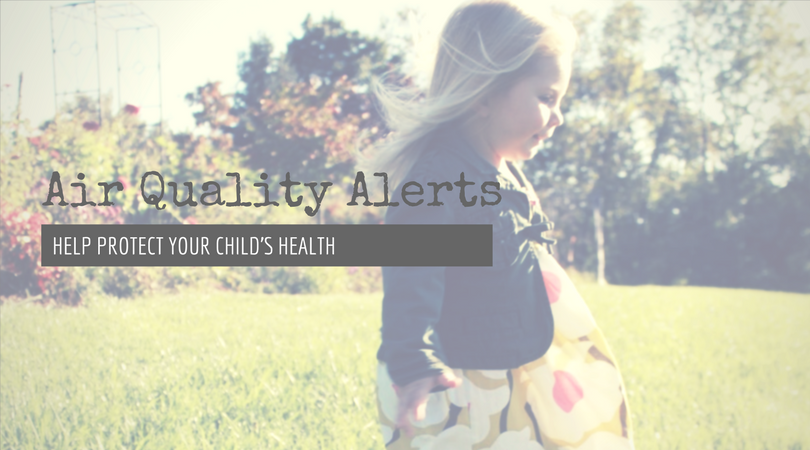Outdoor air quality in southeastern Pennsylvania isn’t always healthy. In fact, there are 15-20 days each year when air pollution levels are dangerously high, according to Environmental Protection Agency (EPA) standards. Typically the culprit is ground-level ozone, which is formed by a cocktail of pollutants from industry, cars and trucks, and power plants. It is usually a problem in the warmer months (April – September) when there is plenty of sunlight to help form ozone. The impacts on children’s health can be frightening.
What does ozone do to developing lungs?
 Ozone is a strong gas that damages and inflames lung tissue. Breathing ozone can hurt lung development, but it also can trigger asthma attacks and make it hard to breathe. Knowing when outdoor ozone levels are high can help you plan to avoid exposure to ozone and protect young lungs.
Ozone is a strong gas that damages and inflames lung tissue. Breathing ozone can hurt lung development, but it also can trigger asthma attacks and make it hard to breathe. Knowing when outdoor ozone levels are high can help you plan to avoid exposure to ozone and protect young lungs.
How can I help protect my child from ozone pollution?
The best thing you can do, is know when air pollution levels are going to be unhealthy. The EPA issues a daily Air Quality Index (AQI) forecast that uses a simple green–yellow–orange–red warning system than lets you know the air quality conditions.
On days when air quality is going to be poor (code orange or red on the AQI), parents can follow the activity guide developed by the Center for Disease Control (CDC) and EPA to manage their children’s exposure to air pollution or prepare their child’s Asthma Action plan.
You can sign-up for EPA’s EnviroFlash air quality alerts on the Air Quality Partnership’s website. You only need an email address and your zip code to get your local alerts.
Exercise is important
The CDC recommends that children get 60 minutes of activity each day. By knowing the outside air quality conditions, you can plan your  students’ activities for times when there is less air pollution present, like in the morning before ozone reaches unhealthy levels. You can also be on the watch for breathing problems caused by air pollution.
students’ activities for times when there is less air pollution present, like in the morning before ozone reaches unhealthy levels. You can also be on the watch for breathing problems caused by air pollution.
Where can I get more information?
Visit www.AirQualityPartnership.org to get current air quality conditions or sign up for air quality alerts. You can also access educational materials and a workbook for children.

